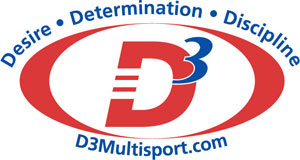 “…an athlete who wants to change a well ingrained bad habit has to swallow pride and move down a lane or two and stay there until the habit is gone under all circumstances…”
“…an athlete who wants to change a well ingrained bad habit has to swallow pride and move down a lane or two and stay there until the habit is gone under all circumstances…”
(Note: This article first appeared on D3’s site and is written by Simon Butterworth)
Five years ago this month my wife Ingrid had a stroke. It’s an event we sure wished we could have avoided, and we could have had we understood the warning signals. Since then I have thought about writing this article. It does not quite seem right to use the tragedy of a major illness to make a point about athletic endeavors but it has been such a powerful lesson for me I think it is time. If you are wondering what this had to do with training for an endurance sport don’t give up on me yet.
Many of you reading this may still be under the impression, as are most insurance companies, that you can only make recovery progress from a stroke in the first few months afterwards. That was the accepted medical view as recently as the 1980’s. The seeds of change started in the 1960’s with full recovery of Pedro Bach-y-Rita, a university professor, after a protracted effort by his two sons’s to get their father crawling then walking and taking again. Pedro went back to work at City University in NY some 5 years after his stroke. Son Paul Bach-y Rita went on to be a pioneer in the understanding of Brain Plasticity.
How does this translate into learning to swim, bike and run efficiently. In theory it’s rather simple. Keep doing the motion the correct way until it becomes automatic. This is not possible to do all the time but you can come close. Certainly the wrong way is to dutifully do a set of perfectly executed drills in your swim warm up and then hammer the main set to make the send off or crush your friends in the lane.
I watched one friend a long time ago do it right. He had injured himself somehow and was forced out of his normal lane in a large swim group in NY. Once back in the water he moved to the slowest lane and there he stayed for most of the winter. Drill set after drill set, at first with fins then without. I was dumb at the time and thought he should be moving up the lanes as he recovered at a faster pace. He explained that he was using the recovery time to correct some swim flaws he had before the accident. Then before I noticed it he was swimming in our fastest lane, something he had not done before.
Alexander Popov’s coach was said to have a practice of pulling Popov out of the water when he got too tired to be able to execute perfect form. This would start with longer rest intervals but once he got to the point of not being able to do what his coach wanted it was off to the showers.
To me all this means is that an athlete who wants to change a well ingrained bad habit has to swallow pride and move down a lane or two and stay there until the habit is gone under all circumstances. If a change in running form is in order you better get used to being passed on the trail by your peers.
The good news is this is the time of year to get religion and work on good technique. The treadmill can help in working on cadence and shortening an over striding condition. The indoor bike trainer especially a Computrainer (a disclosure is needed here, I work for Computrainer) can help develop an efficient pedal stroke. And the pool is open, at least the indoor ones, all winter.
Since swimming is the most technical of the three sports joining a masters program is a huge plus in the effort to get more efficient. Having a coach on deck who can tell you what and when you are doing things wrong, or right is invaluable. You might even be able to get them to take some video of you. If there is no masters program were you live there are still video cameras, put your family or friends to work. Going to a Swim Clinic is also a great idea but it needs to be followed up with the help at your own pool, a master swim coach or friends with a camera, to be fully effective.
Develop some free speed this winter with an all out focus on good technique.
About Simon Butterworth:
Simon Butterworth is an eight time Kona finisher and finished 2nd in his AG
in 2012. He is a certified USA Cycling Coach and has been racing and
coaching for over twenty years.

About D3 Multisport:
D3 Multisport, Inc. provides multisport athletes and runners with a coaching
service that is affordable, knowledgeable, and driven by the highest standards
of customer service. D3 Multisport strives to be the leader in the multisport
coaching field providing customized training programs to athletes of all
abilities. The D3 Multisport mission is to enhance the lives of our clients by improving
their health, athletic performance, and overall lifestyle.






0 Comments